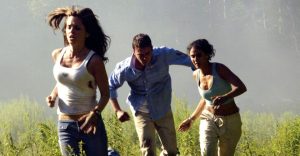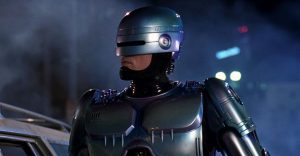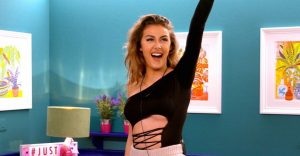Why Some Horror Movie Jump Scares Work (& Others Don’t)

Jump scares seem like the easiest way to frighten the audience, but there’s much more behind the most common trope in horror movies. Every film genre has its own set of conventions that differentiate it from the rest. Romantic comedies are known for their typical wacky misunderstandings and the main character’s climactic declaration of love, while superhero movies almost never miss the game-changing McGuffin that helps the hero save the day. Accordingly, horror movies have unmistakable tropes such as the final girl, the haunted house, and the jump scare. Tropes aren’t inherently detrimental. Quite the opposite—they’re useful tools that make movies feel more familiar. The real problem comes when they’re either overused or poorly executed.
When a character enters a silent dark room and walks toward a mysterious object that appeared out of nowhere mere moments ago, there’s a high chance someone—or something—will suddenly jump out at the gullible victim, often accompanied by an unsettling change in the movie’s score and a jarring sound effect. This is the standard template for a common jump scare. However, the audience’s natural reaction to the jolt doesn’t mean the movie has awakened a sense of fear, as the shock could be followed by a feeling of annoyance if the surprise was unearned. After all, if an abrupt movement was all it took to make an effective jump scare, making a high-quality horror movie would be criminally easy.
As with every other element in a truly terrifying horror movie, good jump scares work when they’re well-timed and properly set up. A well-executed jump scare happens when a movie creates an expectation, whether it aims to give the viewer a false sense of security or suggests that something will soon go off the rails. Subsequently, it goes against that same expectation in order to catch the audience off guard and cause an authentic sense of fear that will endure for the rest of the movie.

Most importantly, a solid jump scare works because it fits within the context of the scenes that surround it, amplifying the movie’s general feeling of dread and retaining its effectiveness on future rewatches. These qualities aren’t determined by any film director or critic, but by the human subconscious that associates the events of a compelling movie with the possibility of a similar real-life scenario. A jump scare that successfully sells the unpredictability of a film feels more organic, and horror movies become scarier the more real they appear to be.
In 2017’s It, Pennywise’s (Bill Skarsgård) sudden appearance while the Losers’ Club are using the projector is the crucial moment when they confirm that they’re all being tormented by the same supernatural monster; in It Follows, every time an empty-eyed person appears, the fear of inevitability fills the screen without any need for flashy movements or sounds. Meanwhile, every time the titular monster suddenly appears out of the shadows in The Nun, it simply startles the audience, replacing fear with surprise. For what it’s worth, anything could take the place of the demon—from a random background character to the stereotypical hidden cat—and the amount of surprise would be the same.
Horror movies don’t show any sign of dropping jump scares as their most famous trope. Fortunately, movies like Sinister and Insidious have masterfully illustrated the concept of a good jump scare. This technique will keep taking many inventive forms, but its basic concept will remain the same: lure the audience into a vulnerable spot and attack when they least expect.
About The Author

















